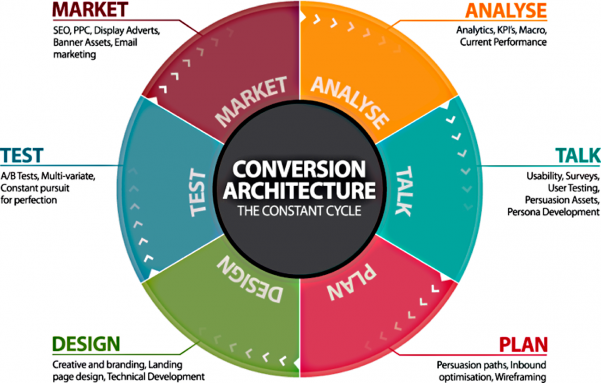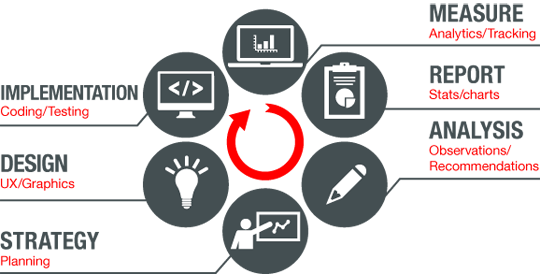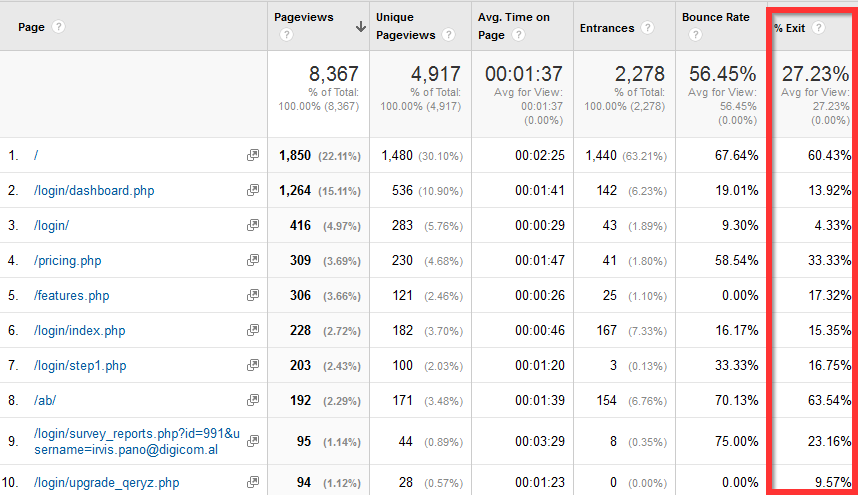Building Your Conversion Plan
At this point, you already know the importance of Conversion Rate Optimization and how it works well in most websites that aiming for sales. You’ve also learned that testing a different variation of your website can make an impact to your conversion rate. You are now to begin your first A/B test.
Are you excited?
Before you jump in and start to feel your way around CRO, you should first know what your priorities are and how you can build a strong conversion plan that works well.
In this lesson, you’ll learn how to gather data from your website and generate testable hypothesis based on that.
Ready?
Read on.
Note: This is the second part of our series on Conversion Rate Optimization Guide.
BUILDING A CONVERSION PLAN YOU CAN BE PROUD OF
“Can I simply guess what changes I should do with my site? Or can I just follow other website’s success on optimizing their conversion rate? I think it will save me time and money.”
There are plenty of successful A/B tests and successful conversion rate optimization campaigns out there. And yes, It’s good to acquire some strategies and learn from them.
However, if you’re thinking that doing the exact same thing will make your website’s conversion successful too, you’re wrong. Cost-effective? Nope. Time efficient? Wrong again.
Each website is different in so many ways. Obviously, each will have different results from Conversion Rate Optimization. It is highly likely that some strategies that worked for others won’t work for you.
Likewise, some strategies that work for your site may not work for others. So relying on the tips and tricks available out there on the web while hoping for the best outcome isn’t a wise thing to do. In the end, it will actually cost you more time and money, as opposed to having a customized, concrete plan that’s tailor-fit to your website and its users.
Let’s figure out how to build your own conversion plan with the help of these 3 easy guidelines:
1. Know your Top Priority
Before you gather data for CRO testing, knowing your main priorities is important. It’s not simply a a matter of increase in sales, increase in sales, increase in sales. Rather, It is knowing how to make your website the best platform for your target visitors to perform the things you want them to do. Here are some things to think of before starting a CRO campaign:
- What is your Conversion Goal? Is it to drive sales? Is it for email sign ups? Downloads?
- What part(s) of your website needs improvement? Is it your check out page? Your navigation bar? A homepage call-to-action button?
- What drives your conversions? Is the happy customer testimonials on the check-out page? Think of something that will increase credibility so your visitors will trust you all the way to becoming a paying customer.
2. Gathering Data
The importance of gathering data is to know how well you are meeting your conversion goals and what you could be doing better.
It’s a bit challenging to optimize the right page(s) of your site if you have lots of necessary pages. So here are some tools you might want to check out to help you spot the non-performing pages or leaks:
These are the perfect tools to start gathering data. I use most of them in combination. The best thing they help you track is how your users are going through your site and if they are dropping of at any point in your supposed funnel pages.
What’s a Funnel Page?
Simply put, a funnel page is a webpage in your site that is necessary for a user to go through in order to hit a goal. For example, a payments page is necessary for a user to finally be able to complete a check-out. So the payments page is part of the check-out funnel. It is therefore considered a funnel page.
If you’re not tracking user behavior in your site yet, you better start now. All that precious data can be utilized for something useful – a case study, a historical analysis, or better yet, a conversion rate optimization campaign.
Once you’re able to gather your website’s user behavior data, there’s no reason for you not to find out which page needs improvement.
Check out the exit rate that of a particular page in your site. People who are leaving your site at an accelerated rate in a certain page is definitely a leak.
Fix. Leaks. Immediately.
Leaks happen when a visitor wasn’t really satisfied in their experience using your site. It covers a broad spectrum of reasons: Not being able to find what they thought they would, finding themselves stuck in your software, being lead to a broken page from a broken link, and the list goes on.
You could actually find out the exit rate of your pages using Google Analytics under Behavior -> Site Content -> All Pages.
Survey Works!
Using online surveys help you a lot. Basically, it will enable you to determine what your customers really want by simply asking relevant questions or asking them about their experience on using your site.
It can be done through the help of various software and sites that offers market research surveys such as SurveyMonkey or SurveyGizmo.
Better yet, you can do on-site surveys wherein you can target visitors that are already in your site. It’s the perfect occasion to ask your visitors when they are in ‘the heat of it all’. Qeryz is a free online survey tool that enables you to do that and even take it further with advanced targeting and behavior features.
The easiest and most effective way to let you know what’s missing in your site is by simply asking your users. There are 3 simple questions you need to ask to your visitors, formulated by Avinash Kaushik:
- What is the purpose of your visit to our website/this page today?
- Were you able to complete your task today?
- If you were not able to complete your task, why not?
3. Generating a Testable Hypothesis
Now that you already have data and insights, and have learned how customers behave in your site, it’s time for the last step. It is the right time for you to brainstorm a testable hypothesis with the help of these questions:
- What is your website lacking?
- What part of your site has a highest exit rate?
- What ideas are you going to do to improve this certain page?
For example, if your event organizing site generates 1,000 visitors a day by driving traffic from Google Adwords (paid advertising).
You find out that you get only 3 inquiries a day, meaning only 0.3% of all the people have actually converted, and the rest leave your site without doing anything important to you.
Sucks, right?
Based on your gathered data and statistics, your contact page has the highest rate of exits. The contact form works, so what could be the problem? Here’s where you’ll formulate a hypothesis.
Problem: There’s nothing in this page that would compel a user to send me an email. It’s dull, there’s no social proof and there’s nothing in return for them.
Hypothesis: If we make it better, more engaging and put in some testimonials, more people would get in touch with us through the contact form.
In order to improve your conversion rate, you run a small test and decide to add some testimonials and rename the contact form to a “SET A FREE APPOINTMENT” form.
The following week, your conversion rate increases by 1.5% and you are now receiving 10-15 inquiries a day.
Not bad, eh?
Always keep in mind that everything starts with a small step. Start tweaking the prominent pages in your website with high exit rates and monitor and record what happens after.
Make sure to follow this series for you to learn further steps on how to test your own variation effectively. You’re halfway there to improving your website’s conversion rate.
References:
http://www.quicksprout.com/the-definitive-guide-to-conversion-optimization-chapter-2/
https://qualaroo.com/beginners-guide-to-cro/building-and-testing-an-optimization-plan
https://yoast.com/conversion-rate-optimization-planning/




